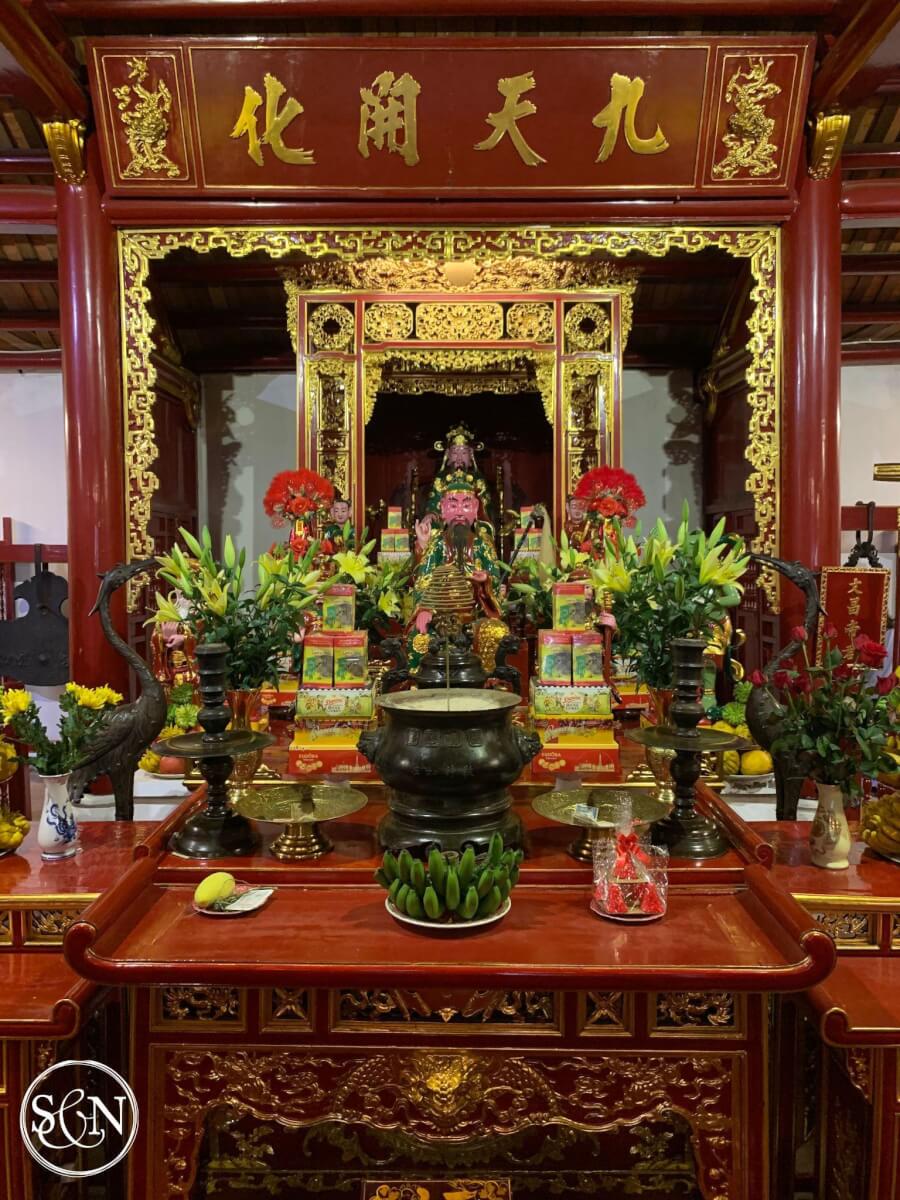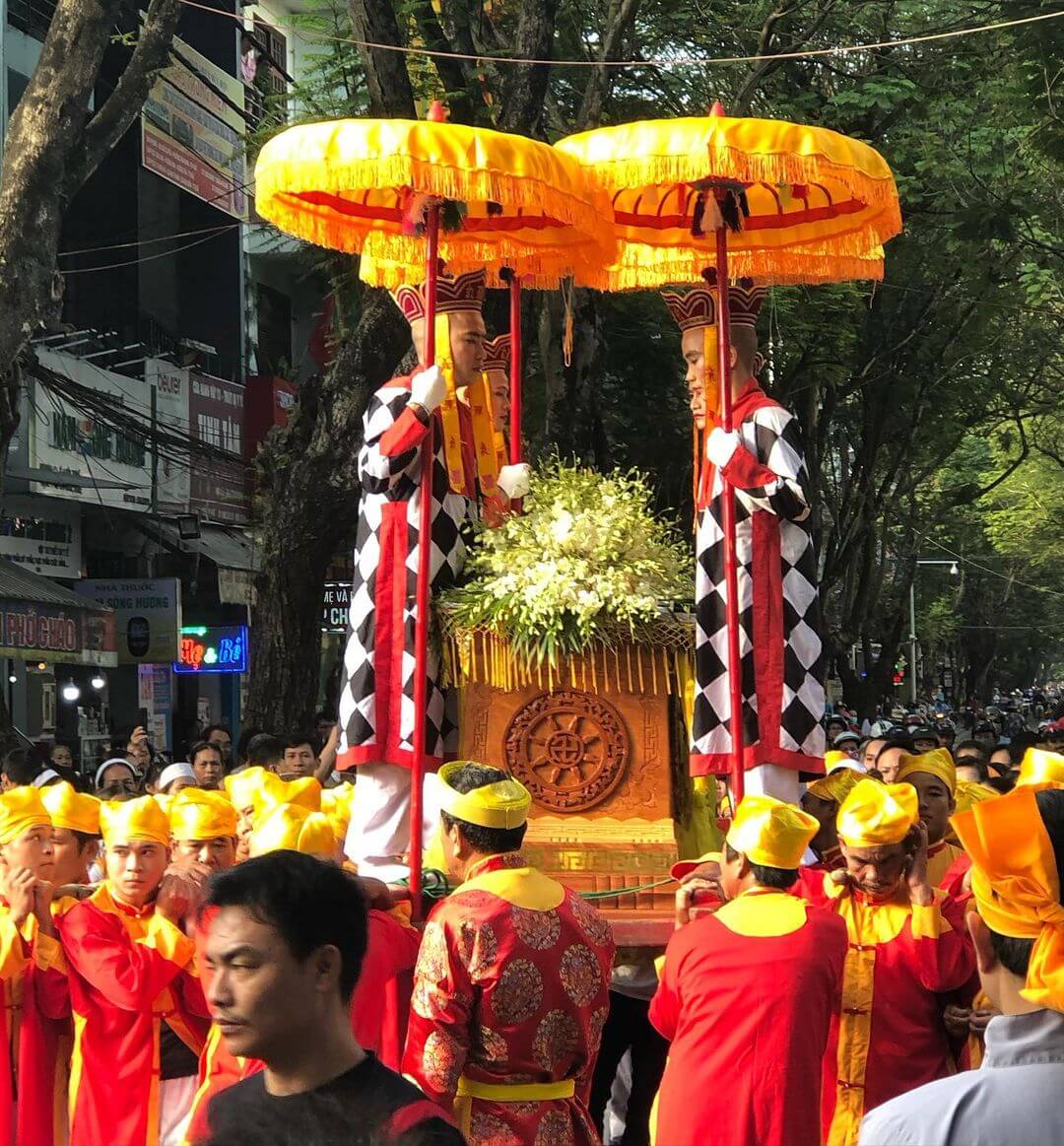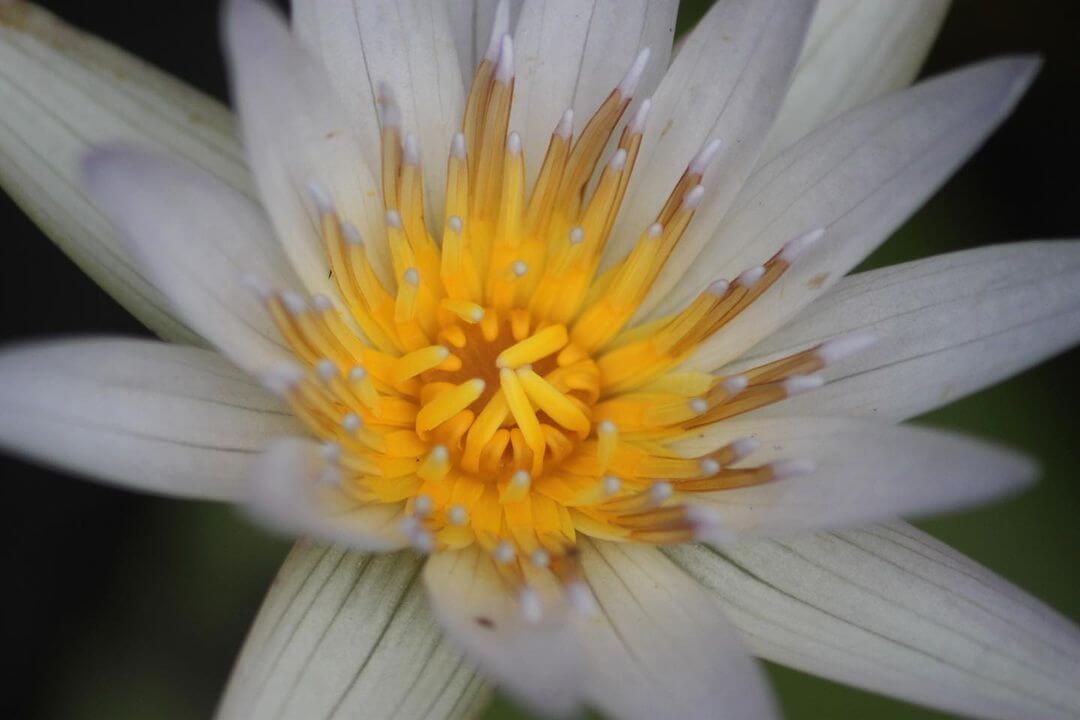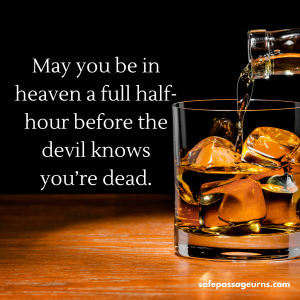Vietnamese are multi-day affairs meant to usher the dead into the afterlife. Families mourn for several days when someone dies. Close family and friends wear white headbands to symbolize their close ties, mourn, and show respect. The day of a person’s death even becomes a celebrated family holiday.
Vietnam Funeral Traditions
Vietnamese families in America perform a variation of the rites families in Vietnam follow. Sometimes the funerals mix Buddhist and Catholic traditions to allow for both cultures and religions. Families create an altar with offerings and the deceased’s portrait. Guests take pictures of themselves with the dead to share with others who can’t attend.
Traditional Vietnamese Funeral Services
Tradition funeral services in Vietnam were long drawn out occasions where much attention and money went to send the deceased to the next portion of life properly. But, of course, nowadays, cremation is a more popular choice than burial after death. So some of these Vietnamese funeral rituals changed to meet current practices.
Ancestral Worship
If you’ve traveled to SE Asia, particularly Vietnam and Thailand, you know that you can barely walk 100 yards without seeing another ancestral shrine. They might be small, family-size, or large business-size. But ancestral shrines are everywhere.
Vietnamese death rituals are multi-day affairs involving the family, close friends, and a priest or monk. Families spend large amounts on funerals since they believe death is simply the beginning of the afterlife. So they prepare great feasts for the dead to take on their journey.

Preparing The Body
In the past, when someone died, family members covered their faces with white cloth or paper as a symbolic barrier between life and death. Likewise, the deceased’s mouth is often propped to drop pieces of rice or gold coins for their afterlife journey. And sometimes, a knife lies on the person’s stomach as protection against the devil.
Family members wash and dress the body. Next, nails are clipped, placed in a small bag, and then tied to the hands. Since bodies are only buried for three years, fingernails are proper identification. After three years in a wooden casket, the bones are then moved to an earthenware container for final burial.
Vietnamese Funeral Food For The Altar
Families place funeral food on the altar as offerings for the deceased’s soul. The fare usually consists of three bowls of rice, three cups of tea, and sometimes other unique dishes.
The exact food depends partly on the family’s region within Vietnam. For example, in North Vietnam, families often place hard-boiled eggs on the altar.
Traditionally, food is replenished throughout the day during the family’s mourning period.
Mourning Clothing For Vietnamese Families
Traditionally, the eldest son or a monk distributes the mourning clothing to family members. The mourning clothes consist of white gauze wrappings and turbans. Straw crowns are sometimes part of the ensemble, in addition to bamboo walking sticks.
The mourners tend to lean heavily on the sticks to show how overcome with grief they feel. Nowadays, white shirts and white headbands signify close family members of the deceased. Other mourners wear dark colors out of respect.
Traditional Vietnamese Funeral Processions
Buddhist monks begin the Vietnamese funeral procession. Often musicians and banner carriers follow behind them. Then comes the altar with the deceased’s portrait. Finally, food displays show the dead’s wealth heading into the afterlife.
Next comes a large hearse painted with dragons and other figures. Then, after the elaborately decorated hearse, comes the family members. Sometimes they wail loudly in lament for their loss. And finally, some friends and acquaintances of the deceased.
The procession moves to the deceased’s final resting place, where the wailing grows in intensity. Then mourners throw a symbolic handful of dirt onto the grave before the burial.
Family and friends gather for a large meal after the procession and burial.

US Vietnamese Services
In the United States, Vietnamese funeral services share some of the same traditional rituals. But even in Vietnam, many of these older customs have fallen away. So here are some things you might see or hear about in the United States.
- Family members gather around their loved ones to wash and dress their bodies in their best clothes. A small knife is still placed on the deceased’s belly to ward off evil.
- Small bits of rice and coins go into the deceased’s mouth.
- The family places food offerings on the altar and lights an oil lamp near the casket. The lamp creates a warm atmosphere for the spirit.
- The wake lasts days instead of weeks, as in traditional Vietnamese funerals.
- Family members hold a prayer vigil while sitting with the deceased’s body. And they light incense around the casket.
- Vietnamese funeral music sometimes consists of drums and gongs. This music honors the deceased’s journey into the afterlife.
- For Vietnamese Catholic funerals, traditional songs are played during mass.
- For Buddhist funerals, you will likely hear more chanting than singing.
Vietnamese Funeral Flowers
The white lotus is the traditional Vietnamese funeral flower. It symbolizes good luck. But if lotuses aren’t available, any white flowers are acceptable to send to mourning families.

Why Do People From Vietnam Wear White Headbands To Funerals?
Vietnamese family members wear white headbands to show their close relationship with the deceased. It may be a throwback to yesteryear’s traditional turbans and straw crowns.
Mourners beyond close family should wear dark, understated clothing to funerals.
Vietnamese Condolences Phrases
What do you say to a Vietnamese friend who has lost a loved one? I think you say the same kind of thing to any grieving person. “I’m sorry.” “I’m here for you.” These sentences convey sympathy and concern when you don’t know what else to say.
- I am very sorry for your loss – Tôi rất tiếc cho sự mất mát của bạn
- I’m here for you – Tôi ở đây vì bạn.
Vietnamese Buddhist Funeral
Vietnamese death rituals differ in the United States from those in Vietnam, but some similarities remain. While Catholicism has gained popularity, most Vietnamese practice Buddhism.
The funeral lasts three days, but friends and acquaintances do not attend all events.
- On the first day, the family dresses the body and places it in the casket.
- Then on the second day, extended family and friends visit to pay their respects.
- Finally, on the third day, a procession takes the deceased to the burial place or crematory.
Vietnamese Buddhists view death as the next stage in life. So they treat the body with care and respect. They burn paper money for the deceased to use in the afterlife. And Buddhists prepare ancestral houses or shrines, so they can continue providing necessities like food and money to their loved ones.
Prayer rituals last 49 days, the amount of time it takes for a spirit to be re-born into a new life. After that, regular ceremonies honor the deceased on the 100th day after death. Then, family members gather for a special meal or celebratory ceremony on the death anniversary.
Vietnamese Catholic Funerals
In a Vietnamese home, you may see Catholic and ancestral altars next to each other. This is because both religions are venerated and intermixed. So Catholic bishops provided instructions on how best to integrate Catholic values into the national culture.
In 2019, these instructions guided Vietnamese Catholics in their practice of ancestral worship. The Church recognizes that it needs to understand and incorporate cultural norms to grow. So these guidelines serve to promote Catholicism while retaining Vietnamese culture.
Accordingly, you might see a mix of Buddhist and Catholic practices in Vietnamese funeral rites. For example, Catholics can light incense in front of Buddha statues. In addition, the guide “allows Catholics to bow down, offer incense and show other formal expressions before dead people regardless of their faith as a sign of respecting the dead and expressing their faith in the Resurrection of Christ.”
This YouTube video shows the mix of Buddhist and Catholic traditions at the funeral of a beloved grandmother.
Conclusion
Vietnamese funeral rites carry many traditions from a time past. First, grieving families care for the deceased by washing and dressing the body. Then they provide food and money offerings, so their loved one has a prosperous journey into the afterlife.
Mourning rituals last three days before the funeral and continue through at least the first year after death. In addition, families honor their ancestors by continually replenishing food and money offerings throughout the year.
With special attention paid to the 49th and 100th days after death, families also honor the deceased on their death anniversary.
Attending a Vietnamese funeral in the United States will give you a peek into the elaborate funeral traditions in Vietnam. But, of course, your expectations as an attendee are the same as if you attend any other funeral.
- Dress conservatively in dark clothing.
- Speak quietly and respectfully.
- Allow the attention to remain on the deceased rather than drawing unnecessary attention to yourself.
- Comfort the family with your kind words of remembrance. Share a remarkable memory of the deceased.

